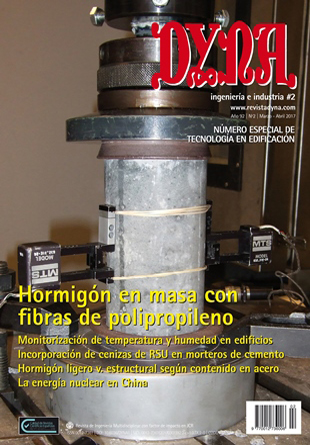INERTING AND VALORIZATION OF FLY ASH FROM SOLID URBAN WASTE FOR CEMENT MORTAR PRODUCTION
Keywords:
Cenizas volantes, Residuos Sólidos Urbanos, Morteros, Inmovilización, Valorización, Cementos de Sulfoaluminato de Calcio, fly ash, Municipal Solid Waste, Mortars, Immobilization, valorization, cements calcium sulfoaluminateAbstract
This article is the continuation of research into inerting fly ash from urban solid waste and its transformation into a new raw material which can subsequently be incorporated into the formulation of cement mortars, with the objective of maintaining their physical/mechanical properties or, if possible, improving them. The article compares the results of mortars made from calcium sulfoaluminate cements (CSA) and traditional Portland cements (CEM-I) in different dosages (1/1 and 1/3). All of them include inerted fly ash in their formulation using a substitution percentage of 10% in weight of the aggregate used. The original feature of the article lies in the publication of new results using larger aggregate diameters (0/4). Furthermore, the inerting process was duplicated by washing the fly ash with sodium bicarbonate in order to contrast the previous results. As a result of the treatment, the percentage of chlorides was reduced by close to 99%, which is conclusive data given the highly heterogeneous nature of the composition of fly ash from MSW, which has helped to verify the validity of the inerting mechanism developed. As far as the physical/mechanical study is concerned, the mortars produced using CSA cements and 0/4 aggregates display similar workability periods to their counterparts with 0/2 aggregates, but these are much shorter than those studied in mortars produced using CEM-I cements. Likewise, this type of mortar displays the best dimensional stability values of all those tested and their densities are not affected by the incorporation of inerted fly ash. In the chapter concerning mechanical resistance, the mortars produced using calcium sulfoaluminate cements, aggregates with a diameter of 0/4 and aggregate/cement dosages of 3/1 display compressive strengths which are 11.89% higher than the reference mortars, a value that exceeds those from previous research projects using fine aggregates. Their bending resistance values are similar to those of the reference mortars.Downloads
Published
2017-03-01
Issue
Section
ARTICULOS

